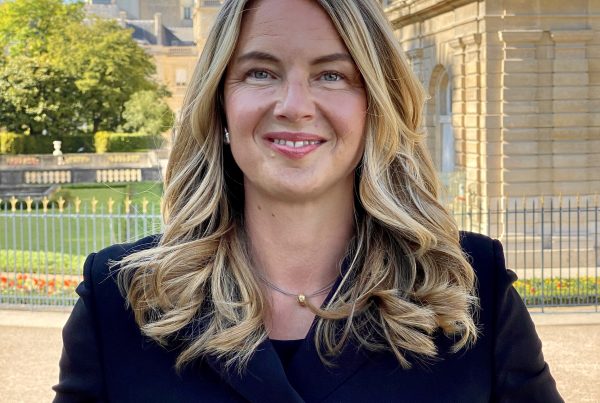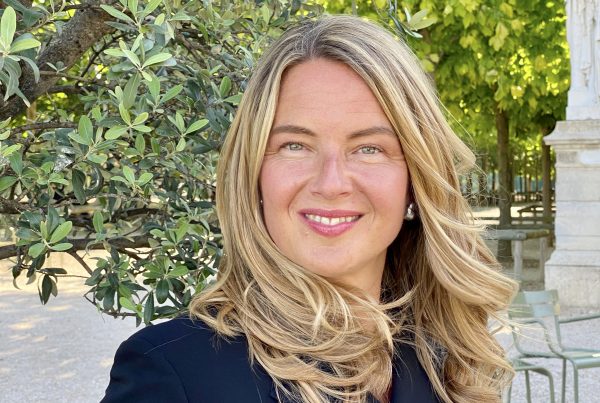“If you have something to say, and a desire to work, you take a piece of stone – which you can find anywhere – then grab a hammer and chisel,” stated the sculptor Costantin Brancusi more than a hundred years ago. When I recently visited Brancusi’s Retrospective at the Centre Pompidou in Paris, I was struck by his clearness of thought that is ever more so valid in today’s world.
Brancusi was the master of abstraction – it is said that he developed a “new language” by expressing the very essence of things through his works. When you look at his studio which is also at display in the Paris exhibition you realize that his toolbox was rather simple while his art and artisan works – for him both went together – depict the genius of the human mind & soul that are clearly superior in condensing “the essence” than any tool could ever be.
Of course, a century later we might want to make use of better tools, faster processing, and scalable outcomes. However, with all these advances the question remains “do we (really) have something to say?” and – recently in the spotlight – “do we have a desire to work?”
I’d like to start with the former question whether we have something to say as this topic moves me since I started my first career in science where “publish or perish” rules. While reading through published papers and when deciding about your own publication strategy you quickly realize that the “system” – aka your profession or context – rewards quantity more than quality and is not necessarily supportive of (risky) pathbreaking innovation. How many publications can you squeeze out of one set of data/results (of course, insights remain unchanged)? What is their impact factor? Research grants are usually awarded when results are (kind of) predictable and “not too risky” as I learned early on in my career which also means that many topics just duplicate or extend existing research.
And this applies in similar ways to the practical world I experienced in my second career as entrepreneur: strategies are copy-pasted and standardized. They become increasingly specialized and silo-driven – companies prefer to hire “specialists” who may be excellent at what they do, but their work has lost any relation to that of the person next to them. However, to develop the ability to extract the “essence of things” you need to be able to connect the dots and draw the big picture.
Do specialists that are motivated by quantitative goals really have something to say we have to ask? Maybe yes because of their expertise but behavioral economics has taught us that there is a (non)legitimate interest to duplicate, expand, and elaborate on a single insight which contributes to the general noise of news and, frankly, wastes everybody’s time spent on understanding a specific subject matter; and time has not fallen in cost or risen in quality.
Already twenty years ago while I was discussing with co-investigators which outlets of publication we might want to pursue for our most recent research results I contemplated the question “what if everybody had only a limited number of words he/she was allowed to publish in his/her life? Would you think more carefully about which insight was “worth” to be shouted out loud into the world? Of course, a “trade” of publishing rights would inevitably result… but I believe it is worth a thought as a framework.
Getting back to “tools” for the creation and dissemination of the (non)-essence of the message: social media powered by AI-generated content has exponentially increased the above-described noise and proliferation of “opinion.” As Kennedy already mentioned: “Too often we enjoy the comfort of opinion without the discomfort of thought.” In this age of information plethora, we might not even have anymore the time (see above) for “thought”, and this is inherently dangerous. Authors have tried to tame in the use and reuse of proprietary thinking but frankly as long as there has been authorship there has been plagiarism. The new tool has just exacerbated the human tendency to appropriate oneself with others’ intellectual property.
What is more worrisome though and much less discussed (because there are no direct fees tagged to it as it is the case with authorship rights) is the inherent devaluation of content when the “noise” of bullshit (sorry) gets too loud. For the ordinary human being it gets increasingly difficult to quickly decide about importance, relevance, and quality of a source. We have created “bullshit as a service” as a friend of mine recently mentioned. And while quality assessment and assurance are key for industrial products (see ISO 9000 etc.) AI has a measurement problem, and we don’t really know how smart these systems are. While a new release with “improved capabilities” is celebrated in the AI world and everybody is relying on it without questioning what this statement really means, the same assessment for a medical device for example would never be acceptable.1 And what about post-market surveillance as it is required in pharma or MedTech?
Given the potential of today’s powerful tools that clearly go beyond hammer and chisel it is increasingly challenging to judge whether people have “something to say.” Of course, it is tempting to ask or verify your (hopefully) thoughts, get some help with a basic outline, or a translation. English is fine, the Roman languages work OK, but German translations get rocky – here you need the human mind to get to the essence of the meaning to do it well. As a rule of thumb, it is recommended to only use these tools in fields where you yourself are enough of an expert to be able to separate the wheat from the chaff. But then you might as well be able to do it yourself – better, deeper; maybe a little slower…
In essence, people have always been seduced by new tools and gadgets and that’s positive as it spurs innovation. Today, everybody can ski with the material available – thirty years ago you had to spend more time on technique and understanding how the body works together with the tool and the terrain. And this “wholeness” has an impact on the second question I raised: the desire to work or do something. It is inherently dependent on the sense you can make of your doings. The mastery of art and craftsmanship lies in the recombination of detail focus and the distillation of the essence of things or creatures. You realize this when paintings of large size are created, and the artist works on a specific element/perspective very closely – while connecting this scene to the greater whole, keeping dimensions in mind. When you look at Brancusi’s sculptures you might first think that the curator did a great job choosing pedestals, but in essence the pedestal is part of the full body of work that Brancusi created.
I believe it is legitimate to grab sophisticated tools to leverage our thoughts if we have something to say and if we remind ourselves that we could “still do it ourselves” – bring the message in a form that it reaches the sender and is perceived or extract the essence of something and depict it in a piece of art or craftsmanship.
However, the designer Erwan Bouroullec nicely described in Le Figaro the worrisome shift that has happened with respect to the perception of tools and crafts(wo)men: “instruments such as wood, glass, or a screw were used by engineers, carpenters, or welders… but in our world of perpetual acceleration, the most important instruments are now trucks, fast and automatic machines, data systems… The real material today is the flow, the speed, the availability in front of demand…. the nature of objects is often corrupted by systems, in a rather insidious way. An object that seems expensive is not. An object disguises itself to evoke a material of which it is not made and, conversely, a disposable object is made with a perennial material…. We have become strangers to manufacturing methods and materials. We have lost a fundamental understanding of the physical world around us, and especially of the methods and people engaged in production, when, in parallel, we became experts in systems, networks, the non-material world.”
He invites us to put simplicity back at the center of our thinking. The simplicity of an exchange between two people who respect each other. Consequently, we will relate our work to those of others which spurs our desire to work. It also creates meaning in content, so we have something to say. And with a little luck our message will make it through the “noise” and reach its recipient. This is the ferment of reappropriation, and therefore of freedom (of thought).
So here we are at ENJOY STRATEGY ready to turn up our sleeves, and tackle the challenges that evade the more of the same, the predictable.
Once a month I share my perspective on the state of the healthcare world and beyond with thousands of global leaders. Subscribe to be part of this community and receive invitations & complimentary insights upfront!
https://www.linkedin.com/pulse/tools-craftswomen-prof-dr-katharina-janus-rxewf
Take care, be safe, and enjoy what you can. Stay tuned for any updates https://www.linkedin.com/in/prof-dr-katharina-janus-b391321/
Sincerely,

Prof. Dr. Katharina Janus
President & CEO, ENJOY STRATEGY, Paris
Founder, Center for Healthcare Management, Paris
https://enjoystrategy.com/
http://katharinajanus.com/

![[PERSPECTIVE by @katharinajanus] ON TOOLS AND CRAFTS(WO)MEN](https://katharinajanus.com/wp-content/uploads/2020/12/kj-portrait-highres-scaled.jpg)


